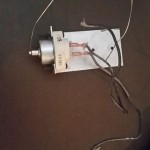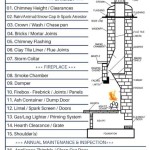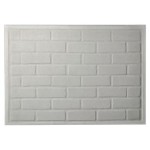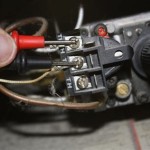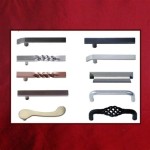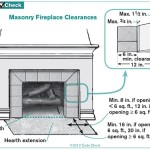Understanding Gas Burning Fireplaces
Gas burning fireplaces offer an alternative to traditional wood-burning fireplaces, providing heat and ambiance with greater convenience and reduced maintenance. These appliances utilize natural gas or propane to fuel a controlled flame, simulating the look of a wood fire. Their installation, operation, and maintenance require careful consideration to ensure safe and efficient performance.
A gas fireplace consists of several key components working in concert. These include the gas valve, which regulates the flow of gas to the burner; the burner itself, where the gas mixes with air and combusts; the pilot light or electronic ignition system, which initiates the flame; and the venting system, which safely exhausts combustion byproducts outside the home. The firebox, which is the enclosure containing the flames, is often lined with ceramic logs, glass beads, or other decorative elements to mimic the appearance of a real fire.
The popularity of gas fireplaces stems from several advantages. They offer instant heat output, eliminating the need to gather, stack, and season firewood. They are generally easier to operate, often requiring only the flip of a switch or the press of a button to ignite. Furthermore, gas fireplaces produce significantly less ash and particulate matter compared to wood-burning fireplaces, contributing to cleaner indoor air quality. However, understanding the nuances of gas fireplaces is crucial for homeowners considering their installation or use.
Key Point 1: Types of Gas Fireplaces
Gas fireplaces are available in a variety of types, each with distinct characteristics and installation requirements. These can be broadly categorized into direct-vent, vent-free (or ventless), and B-vent models.
Direct-vent fireplaces are considered the safest and most efficient option. They draw combustion air from outside the home and exhaust combustion gases directly outside through a sealed venting system. This closed combustion system prevents indoor air from being used for combustion and eliminates the risk of carbon monoxide entering the living space. Direct-vent fireplaces can be installed on exterior walls, allowing for flexible placement options.
Vent-free fireplaces, as the name suggests, do not require a chimney or venting system. They operate by burning gas very efficiently, minimizing the production of carbon monoxide. However, they release all combustion byproducts, including water vapor and small amounts of nitrogen dioxide, into the room. While vent-free fireplaces are equipped with oxygen depletion sensors (ODS) that shut off the gas supply if oxygen levels drop too low, they are not recommended for use in bedrooms, bathrooms, or small, poorly ventilated spaces. Local codes may restrict or prohibit the installation of vent-free fireplaces due to potential health concerns.
B-vent fireplaces utilize an existing chimney or a dedicated B-vent pipe to exhaust combustion gases. They draw combustion air from the room, which is then vented along with the flue gases. B-vent fireplaces are generally less efficient than direct-vent models because they draw heated air from the room and send it up the chimney. They also require a properly sized and maintained chimney to function safely.
Key Point 2: Installation and Safety Considerations
Proper installation is paramount for the safe and efficient operation of a gas fireplace. Installation should always be performed by a qualified technician licensed in gas appliance installation. The technician will ensure that the gas line is properly connected, the venting system is correctly installed, and the appliance is functioning according to the manufacturer's specifications.
A crucial aspect of installation involves selecting the appropriate venting system. Direct-vent fireplaces require a specific type of venting pipe designed to withstand high temperatures and corrosive gases. B-vent fireplaces require a properly sized and inspected chimney or B-vent pipe. Venting systems must be installed with the correct clearances to combustible materials to prevent fire hazards.
Carbon monoxide detectors must be installed and maintained in homes with gas fireplaces. Carbon monoxide is a colorless, odorless, and deadly gas produced by incomplete combustion. Detectors provide an early warning in the event of a malfunction or improper venting, allowing occupants to evacuate the premises. Detectors should be tested regularly and replaced according to the manufacturer's recommendations.
Regular inspections and maintenance are essential for ensuring the continued safe operation of a gas fireplace. A qualified technician should inspect the fireplace annually, checking for gas leaks, proper venting, and burner cleanliness. The pilot light assembly, gas valve, and venting system should be thoroughly examined. Any issues identified during the inspection should be addressed promptly by a qualified technician.
Key Point 3: Operational Efficiency and Maintenance
The operational efficiency of a gas fireplace is influenced by several factors, including the type of fireplace, the size of the appliance, and the thermostat settings. Direct-vent fireplaces are typically more efficient than B-vent or vent-free models due to their sealed combustion system.
Proper maintenance can significantly improve the efficiency and lifespan of a gas fireplace. Regular cleaning of the burner and firebox can prevent the accumulation of dust and debris, which can impede airflow and reduce combustion efficiency. The glass door or panel should be cleaned periodically with a non-abrasive cleaner to maintain visibility of the flames.
The pilot light should be visually inspected regularly to ensure it is burning with a steady, blue flame. A yellow or flickering flame may indicate a problem with the gas supply or burner. In some cases, the pilot light can be adjusted to improve its performance. If the pilot light repeatedly goes out, it is essential to consult a qualified technician.
The decorative logs or glass beads should be arranged according to the manufacturer's instructions to ensure proper airflow and combustion. Overcrowding or improper placement of the decorative elements can obstruct the burner and reduce efficiency. Avoid placing any objects, such as blankets or furniture, within close proximity to the fireplace to prevent fire hazards.
By adhering to these installation, safety, and maintenance guidelines, homeowners can safely and efficiently enjoy the warmth and ambiance of a gas burning fireplace.

Gas Burning Fireplaces Sierra Hearth And Home

Benefits Popularity Of Gas Fireplaces Stoves And Fireplace Inserts

Gas Burning Stove Installation Service Provider More In Wi

Napoleon Ascent Dx42 Direct Vent Gas Burning Fireplace

Gazco Chesterfield 5 Gas Stove

Why Annual Inspections Are Needed For Gas Fireplaces

Free Standing Gas Fireplace Stoves For 30 On Now

Convert To Gas Installing Fireplace Inserts Doctor Flue

Freestanding Gas Burning Stoves Sierra Hearth And Home

Single Sided Ready To Finish Gas Fireplace Outdoor Greatroom Greatrooms
Related Posts

